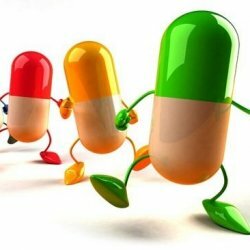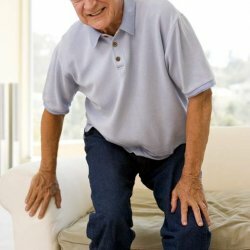Joint treatment: modern techniques
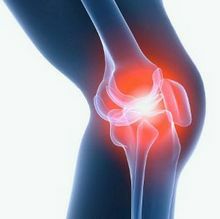 Joints are classified as movable joints, which allow a person to perform various movements and maintain the body in the desired position.In medicine, there are several types of joint diseases, each of which has its own characteristics, symptoms and can be treated using modern techniques.
Joints are classified as movable joints, which allow a person to perform various movements and maintain the body in the desired position.In medicine, there are several types of joint diseases, each of which has its own characteristics, symptoms and can be treated using modern techniques.
Congenital joint diseases
Congenital pathological changes in the structure and structure of the joints can begin as early as the 4th week of intrauterine fetal development. The most commonly diagnosed problems are:
- patella aplasia;
- patella hypoplasia;
- arthrogryposis.
Medicine classifies two forms of congenital arthrogryposis:
- is easy - without muscle damage;
- generalized - accompanied by pathological changes in the structure and structure of muscle tissue.
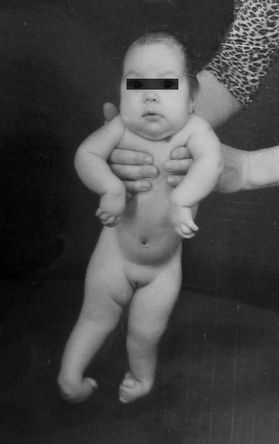 In the second case, the patient will have a too characteristic appearance for arthrogryposis:
In the second case, the patient will have a too characteristic appearance for arthrogryposis:
- extremities( upper and lower) are deformed and shortened;
- torso too long, "elongated";
- visually the neck looks too wide, because the patients have too narrow shoulders;
- with the age of the hands are set in a single position: external rotation;
- fingers on the hands are always slightly bent.
Treatment of congenital pathologies
Pathological changes in joints of an innate character should be treated from the first days of a child's life - this determines the usefulness of his adult life.Previously, medicine could only offer gypsum of deformed joints - it was believed that in this way they "become" in place. The modern scheme for the treatment of congenital joint diseases involves the following:
- daily massage - passive joint movement helps to relieve tension;
- implementation of a set of exercises on physical therapy;
- Orthosis - applies only in the case of mild deformities of the joints;
- physiotherapy procedures.
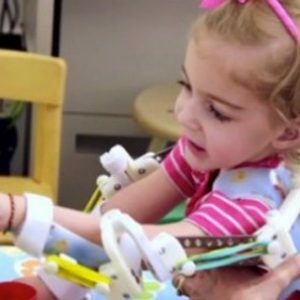 Please note: the above treatment procedures should be performed every day and as often as possible throughout its duration.
Please note: the above treatment procedures should be performed every day and as often as possible throughout its duration.
Sometimes the treatment is delayed and then the patient is forced to maintain the rhythm of his life all his life - this will ensure his mobility and "push" the day of sitting in a wheelchair, although this moment is inevitable.Alternate / step-by-step plastering of separate groups of joints is also used by modern medicine, but only in combination with all other methods and in the absence of severe deformations.
Joint damage
Recommended to read:Damage to the joints are divided into two types - closed and open.
The second category includes joint injuries with closed or open fractures of bones.Their treatment consists in carrying out antibacterial therapy, providing immobilization of the joint( immobility) and performing regular surgical treatment of the wound surface.In particularly severe cases, surgical intervention is indicated.
Closed joint injuries - these are sprains, bruises, ligament ruptures, intraarticular fractures, dislocations.The difficulty of treating such injuries is the need to provide two opposite effects - complete immobilization of the damaged joint and its development in order to avoid the development of dystrophic phenomena.This is achieved only through specific physical therapy.
Stages of exercise therapy with closed joint damage
Immobilization .This stage lies in providing the general tone of the body, working with non-bound joints - it's physical education for intact joints, massage of the extremities, respiratory gymnastics.If a relative immobilization was carried out, that is, the limb is in motion, but any one joint is specifically immobilized, then the physician can prescribe partial physical training.
Note: very rarely, but apply manual or hardware massage to the area of the damaged joint - this is done in special slots in the bandage.If the joints of the upper extremities are damaged, then the original work therapy begins with the first days of immobilization.For example, a joint in the hand is damaged, a tight fixation bandage is applied, but the fingers remain free-they need to be constantly moved so as not to lose the skills of the brush.In the case of injuries to the lower extremities, no one gives a bed rest to the patient - the patient is taught to move by means of a support: a cane, a special device, handrails.
Restoration of passive / active mobility in the damaged joint .After the end of the immobilization period, a course of special exercises is conducted: develop the joint by alternating passive movements( simple joint position change) and active exercises in a lightened version.
Note: in some cases, the immobilization of the damaged joint is not carried out.In this case, the second stage of physiotherapy exercises begins immediately after the removal of edema and acute pain.After passive exercises it is recommended to conduct more intensive exercises: weight gain of the limb being developed, visas on the gymnastic staircase.At the same time, the development of periarticular muscles begins - this means conducting a manual and hardware massage.If the joints of the lower extremities have been damaged, then in the absence of acute pain the patient can begin to get used to walking without support.
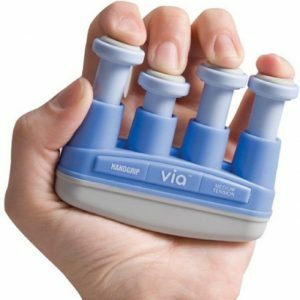 Full recovery of the function of the joints. This is the final stage of physiotherapy with closed joint injuries - it is the most intense and active.Passive studies are completely excluded, muscles and joints are actively developed.As the state of health improves, the patient's burden should increase - for example, if you have problems with your hands, you must achieve the ability to write, transfer small items, and firmly hold large objects with your fingers.If there was damage to the joint of the lower limbs, then a simple walk without support is replaced by an easy run, overcoming obstacles, climbing the ladder, jumping.
Full recovery of the function of the joints. This is the final stage of physiotherapy with closed joint injuries - it is the most intense and active.Passive studies are completely excluded, muscles and joints are actively developed.As the state of health improves, the patient's burden should increase - for example, if you have problems with your hands, you must achieve the ability to write, transfer small items, and firmly hold large objects with your fingers.If there was damage to the joint of the lower limbs, then a simple walk without support is replaced by an easy run, overcoming obstacles, climbing the ladder, jumping.
Treatment of arthritis
Arthritis refers to inflammatory diseases, distinguishes several types of this pathological process that are caused by various pathogens, viruses or bacteria.Treatment of joints with arthritis is also variable - the doctor should conduct a full examination of the patient and only then make a decision about the therapeutic measures.
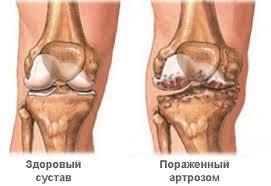
About the causes of arthritis, the specialist says:
Conservative treatment methods can only help with allergic, infectious and gouty types of the pathology in question. In this case, modern methods involve the implementation of complex therapeutic measures:
- anti-inflammatory drugs of non-steroidal and steroid type;
- physiotherapy - UV radiation, electrophoresis with analgesics, phonophoresis;
- sanatorium treatment - balneological clinics, mud therapy, hydrotherapy;
- massage and a specially developed complex of exercises from the category of therapeutic physical education.
Surgery is often required for rheumatoid arthritis - as a rule, this type of inflammation leads to disruption of joint function, so endoprosthetics can be used.
Overview of symptoms of rheumatoid arthritis:
Note: Treatment of purulent arthritis is impossible without antibiotic therapy directly inside the joint.Only after getting rid of the infection can begin the next stages of treatment.
When diagnosing allergic arthritis, all the above-mentioned stages of treatment are not practical - the clinical picture disappears as soon as an allergen is detected and antihistamine therapy is administered.Most often used antihistamines of the latest generation - Claritin, Cetrin, Desal and others.But in some cases, Suprastin, Diazolin, can help.Very rarely patients are prescribed glucocorticosteroid drugs( hormonal) - this decision should be taken only by the doctor in charge.
Treatment of arthrosis
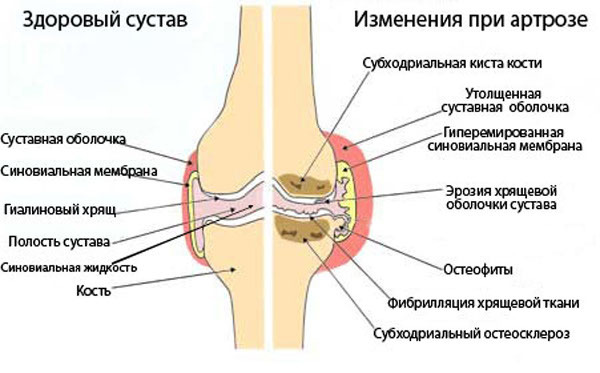
Osteoarthritis - a pathology of joints, associated with dystrophic changes in their structure.The risk of the disease is associated with difficulties in diagnosing arthrosis - patients come to the specialists for help too late.
There has not been a single case in the world medical practice that the arthrosis has been completely cured and the functions of the joints have been restored.Nevertheless, treatment of arthrosis should be carried out at a professional level. Modern methods imply the following prescriptions for arthrosis:
- long courses of chondroprotective therapy - in case the cartilage is not yet destroyed;
- corticosteroid drugs with the introduction of the inside of the joint;
- application of ointments with anti-inflammatory action.
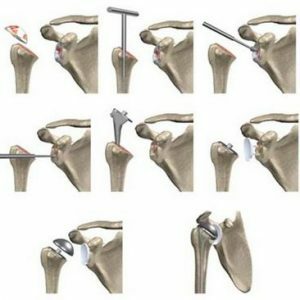 Many doctors recommend twice a year to undergo sanatorium treatment - this refers to auxiliary methods of influencing the degenerative process in the joints, but does not have a therapeutic effect.Many experts generally consider mud therapy, mineral baths with arthrosis are absolutely useless.
Many doctors recommend twice a year to undergo sanatorium treatment - this refers to auxiliary methods of influencing the degenerative process in the joints, but does not have a therapeutic effect.Many experts generally consider mud therapy, mineral baths with arthrosis are absolutely useless.
Please note: surgical treatment for diagnosed arthrosis is not carried out even in the most severe cases - it gives too short-term effect.
The modern technique for the treatment of arthrosis is the operation of endoprosthetics. The destroyed joint is replaced, and the patient gets the opportunity to return to an active lifestyle.In the postoperative / recovery period, patients are shown a long course of physiotherapy and massages.
More details on arthrosis and treatment - in the video review:
Treatment of joints, even the most modern techniques - a long process, requiring patience and strength.Some stages of therapy bring quite strong painful sensations - for example, physiotherapy exercises after joint injuries and their immobilization.But without such measures, the patient can become disabled - if you allow the "congealing" of the joint, then return it to the desired functionality will not work even through surgical intervention.
In order to treat joint pathologies in a shorter time and with maximum comfort, you should periodically visit the doctors for preventive examination, treat even the simplest bruises under the supervision of medical workers and pay attention to the slightest changes in the well-being and functionality of the joints.Early diagnosis allows the use of modern technologies in treatment and dispenses with surgical intervention and endoprosthetics.
Tsygankova Yana Aleksandrovna, medical reviewer, therapeutist of the highest qualification category.


